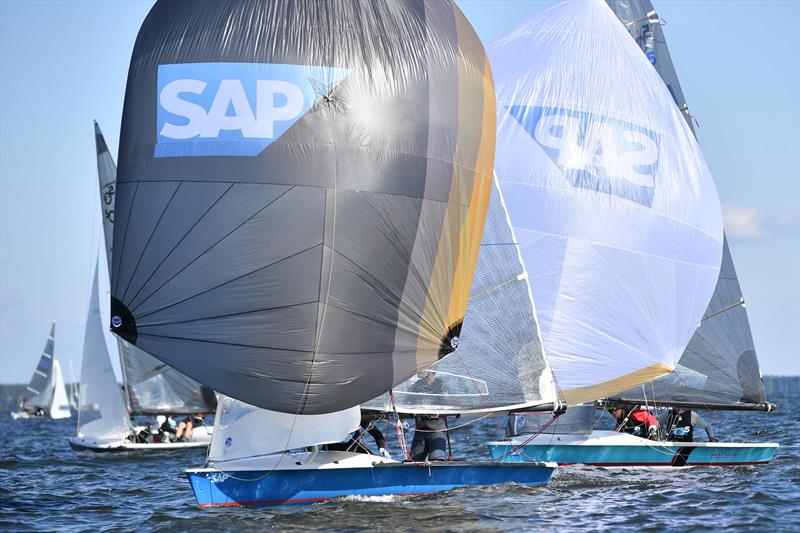

Read Situations at the Leeward Mark. All the good work of the upwind leg can be undone at the leeward mark.
Leeward mark rounding in a competitive one-design fleet can be a daunting experience and when a mix of boats are arriving at different speeds and angles it can be even tougher to work out who’s going to get there and when.
Learning to read situations as they develop comes through practice and with some clear thinking you can make big gains at the bottom end of the course.
Begin the leg with the end in mind –
What are the priorities for the next leg? Get in phase with the oscillating shifts? Hold a lane to the advantaged side? Get onto the ‘long tack’ as soon as possible? The answers to these questions should shape your positioning against other boats on the leeward mark approach.
For an early tack, avoid being overlapped outside another boat at the mark: drop early, weave around if necessary to break the overlap and exit tight on the mark so following boats cannot pin you out.
If you are making a charge for the left-hand side (in a port-hand rounding), a tight rounding is only necessary if there are boats close ahead: a smooth arc gives better VMG.
Understand Rule 18 – Sailing Rule 18 is by far the longest and wordiest of all Part 2 rules. Its main purpose is to state when one of a pair of boats must give mark-room to the other. The boats must both be required to leave the mark that they are near on the same side. One of them must be in the three-length zone around the mark.
An inside right-of-way boat can generally push for the classic ‘wide in, tight out’ rounding: a keep clear boat cannot if the right-of-way boat is close outside. If there is doubt about whether there was an overlap at the zone, the protest committee will go back to the last point of certainty.
Choose the right Gate Mark –
If one mark appears favoured, ask yourself why. If it’s due to an oscillation, the only way to bank any apparent gain would be to tack immediately. This may not be possible. The boats rounding the ‘unfavoured’ mark will get straight in phase, and cross you on the next shift.
Depending on leg length, if you are three-quarters of the way down the run and you can’t tell which one is favoured, there is almost certainly something more important to think about. Go back to point 1 and chose the mark that is going to get you on the tack you want.
Think Ahead –
Hoist the jib part-way in plenty of time to avoid last-minute fumbles. Check the conditions early and get everything onto its mark well before the rounding.
Nothing is more frustrating than a saggy jib luff or in-haulers that need adjusting. It’s the most important part of the beat when the weight on the rail is at its most critical.
Use the Angle –
A gybe drop inside the zone guarantees an overlap on any boats approaching on the other gybe. Aim to hit the zone directly to windward of the mark. Be prepared to slow down by sailing extra deep to give a little extra time.
Avoid overshooting the layline at the last gybe in. If a gust then forces you down to or below the layline on the final approach, the gybe drop will be almost unachievable for the crew.

